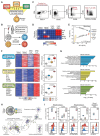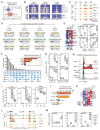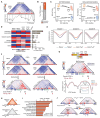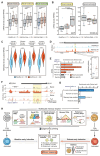3D chromatin reprogramming primes human memory TH2 cells for rapid recall and pathogenic dysfunction
- PMID: 37418545
- PMCID: PMC7617366
- DOI: 10.1126/sciimmunol.adg3917
3D chromatin reprogramming primes human memory TH2 cells for rapid recall and pathogenic dysfunction
Abstract
Memory T cells provide long-lasting defense responses through their ability to rapidly reactivate, but how they efficiently "recall" an inflammatory transcriptional program remains unclear. Here, we show that human CD4+ memory T helper 2 (TH2) cells carry a chromatin landscape synergistically reprogrammed at both one-dimensional (1D) and 3D levels to accommodate recall responses, which is absent in naive T cells. In memory TH2 cells, recall genes were epigenetically primed through the maintenance of transcription-permissive chromatin at distal (super)enhancers organized in long-range 3D chromatin hubs. Precise transcriptional control of key recall genes occurred inside dedicated topologically associating domains ("memory TADs"), in which activation-associated promoter-enhancer interactions were preformed and exploited by AP-1 transcription factors to promote rapid transcriptional induction. Resting memory TH2 cells from patients with asthma showed premature activation of primed recall circuits, linking aberrant transcriptional control of recall responses to chronic inflammation. Together, our results implicate stable multiscale reprogramming of chromatin organization as a key mechanism underlying immunological memory and dysfunction in T cells.
Conflict of interest statement
Figures







References
MeSH terms
Substances
LinkOut - more resources
Full Text Sources
Molecular Biology Databases
Research Materials

